Inscryption Review
Yet another card game? Well, it certainly did look at the very least original when I first checked out the trailer a few months back. That was enough to convince me to try it out! The fact that it has recently received a Linux client was also a good sign.
Inscryption is NOT yet another card game. There’s a lot more to it, and the card battles themselves also feel extremely different from what you may be used to. When you face your opponent, eveything will be decided within a few minutes. Sometimes the card battles are over in just 30 seconds. But let me back track a little bit. You first need to understand the context.
The first screen of the game shows a few typical options, and “new game” is greyed out. You have to “continue game” in order to start, while you have never saved anything up until now. Weird? Yes. You’ll understand that way later.
You start in a kind of dark room, with an unknown host (you can only see their eyes in the dark) asking you to play with them a board game.

This is a life and death game. If you lose, they will kill you - and then you will start again as a new player coming in. But where does this all take place? You can actually leave the board anytime in between games and look around. Moving around is still in first-person view, but not with a free mouse-driven look. You only move from one square to another like Dungeon Master or Eye of Beholder of old.
You are actually stuck, prisoneer in a small room decorated with all kind of devices and strange symbols. You can toy around with them. Some devices are hidden puzzles that release new cards that you can insert in your deck.
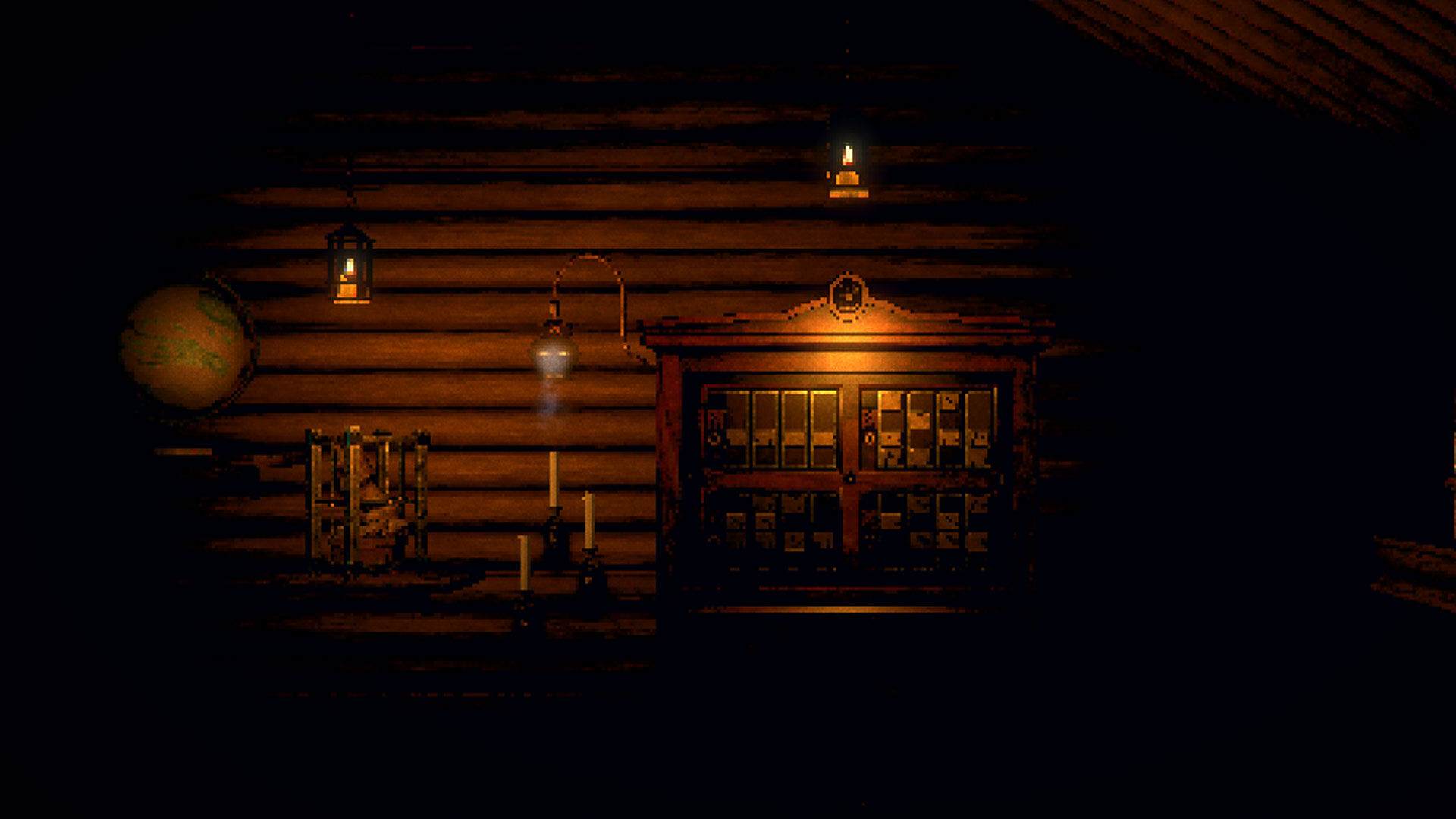
Some other are secret boxes that require some kind of key or object to reveal their treasures… There’s also this old book telling you more the symbols found on the cards, giving you some hints on the modifiers that some cards possess. Strangely, some parts of the book are redacted (with black ink over them) so that you can’t read it all.
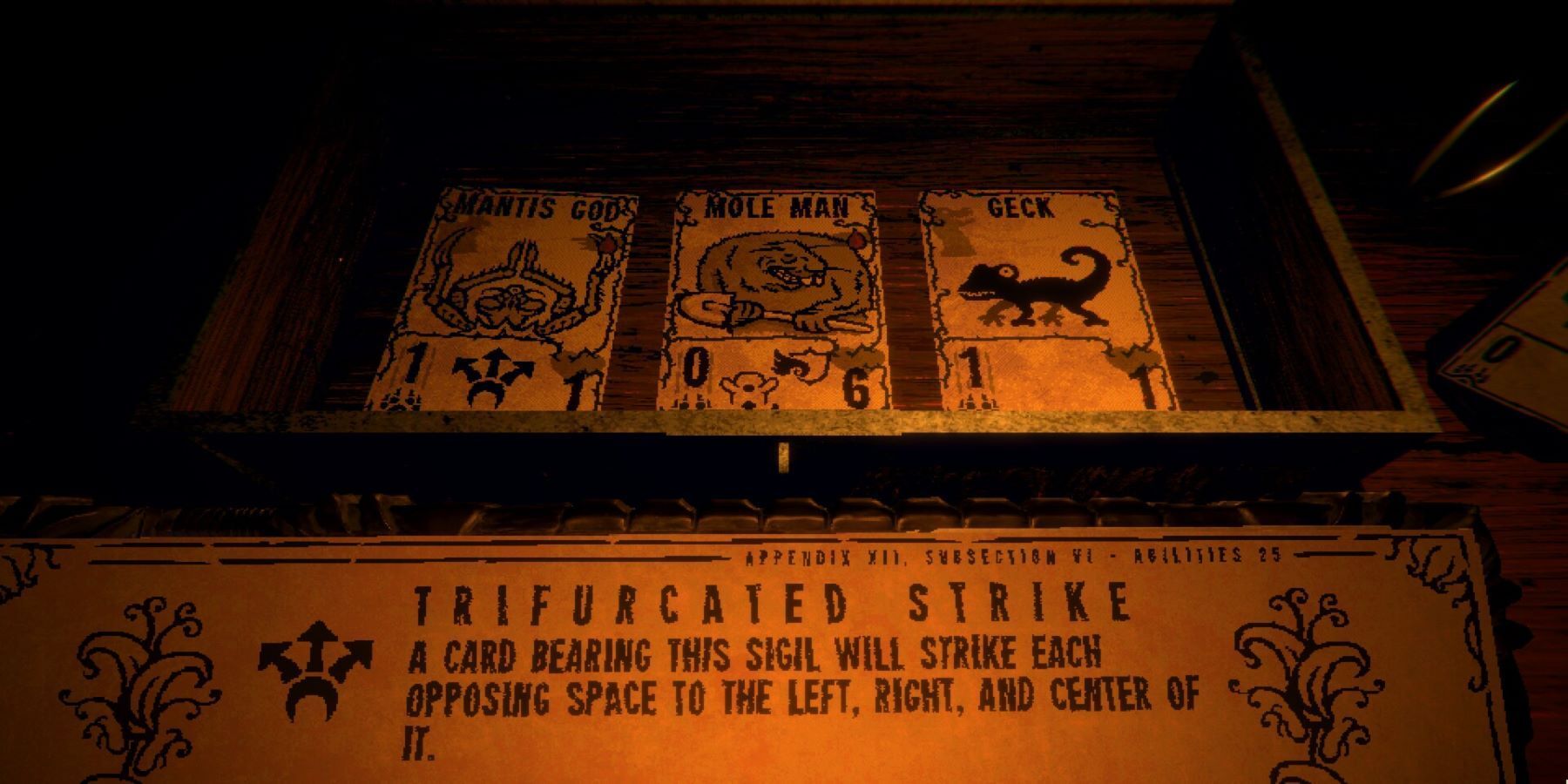
Soon enough your host will call you back to the table to continue playing the game. That’s all you can do in the end and hope to win to escape this strange place. The host follows the rules - he will not kill you by cheating or for no reason, so there’s always that comfort that as long as you do OK, you may be able to make it!
Your host gives you a first few cards to get started. You will discover that in your deck there is the “Stoat” card… a card that happens to be alive! The stoat talks a lot, telling you about what’s happening here and giving you hints about what to do next.
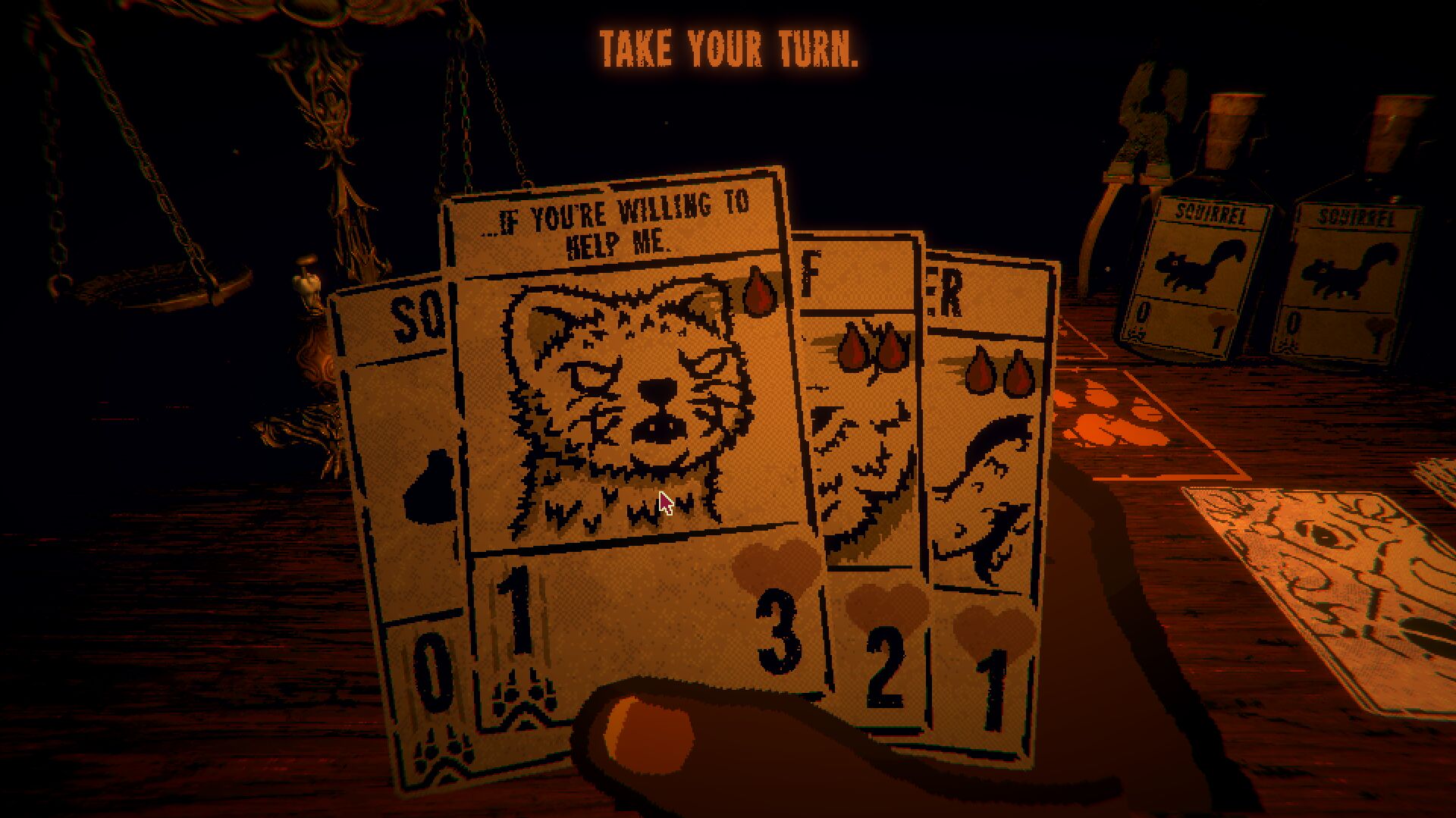
Or telling you when you did a bad move when using them. It’s surprising and refreshing to see. The Stoat tells you that there are actually a few more other cards like them who are alive in there, and that you’ll need to find them to hope to make it out alive.
The board game consists in going from the start of the level to the end by choosing your own path, in a very similar fashion to Slay the Spire. The difference is that you can see what kind of options are ahead of you in every branch for a least 4-5 moves. In every game each level is randomized so you will never see the same path over and over again.

At the end of the path there is a boss to beat before you can go to the next level. Along the way, you can choose between various steps and fights, and this has deep implications on your ability to win. Some steps give you different kind of bonuses, new cards or card upgrades, and if you keep making bad choices this will bite you in the ass sooner or later.
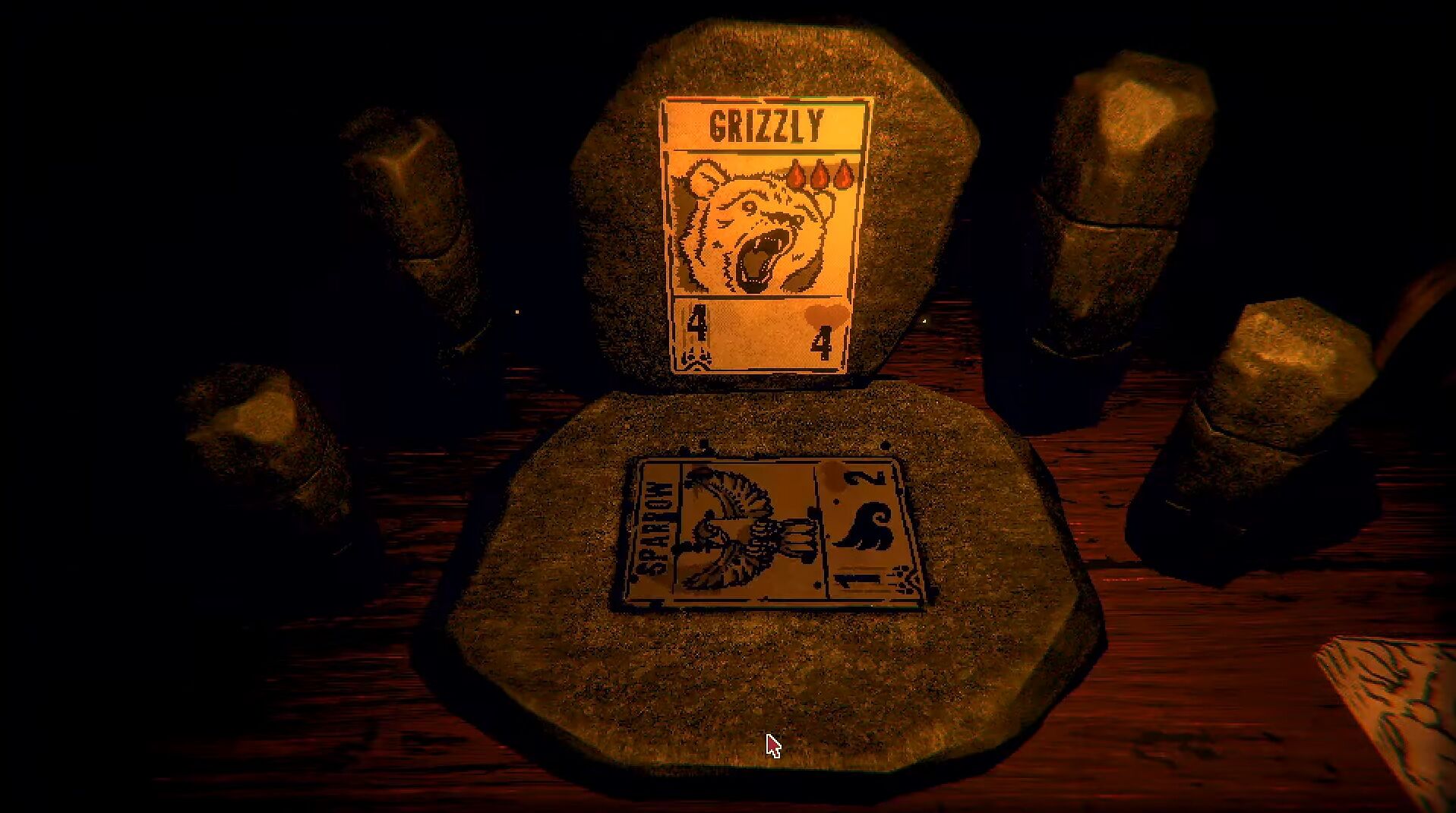
Sooner, most likely. Add to that, you cannot really go back: the game keeps overwriting your save at every step of the way. Good choices, Bad choices, you will have to live with them.
Once you get to a fight on the map, the host removes the map from the table and the card game setup begins. And this is where things feel really novel. The game is completely asymmetrical. Your host is attacking you. You have to defend your position. To win, either your host or you most hit each other directly by using their cards. A direct hit causes one’s teeth to fall off, and such teeth end up on a scale.

Once the scale tips over completely on one side, it’s game over for that person. A differential of 6 is enough to win the game. Cards can do a direct hit when they are on the frontline and have no other card blocking them in the way. How “hard” the cards hit depends on their power figure, and how hard they can resist being attacked depends on their health figure. In order to prevent from being hit every time, you have to position your cards to block those of the host… or ensure you hit them faster than they hit you, since it’s all a matter of balance (tipping the scale faster).
You start with four cards, and at every turn you have a choice to either:
- pick up a squirrel card
- pick up a new card from your deck
Why squirrels? Well, these cards don’t have any attack power, but have 1 Health. In order to put any kind of card from your deck, you usually need to spend “blood” and you spend blood initially by killing existing cards on the table.
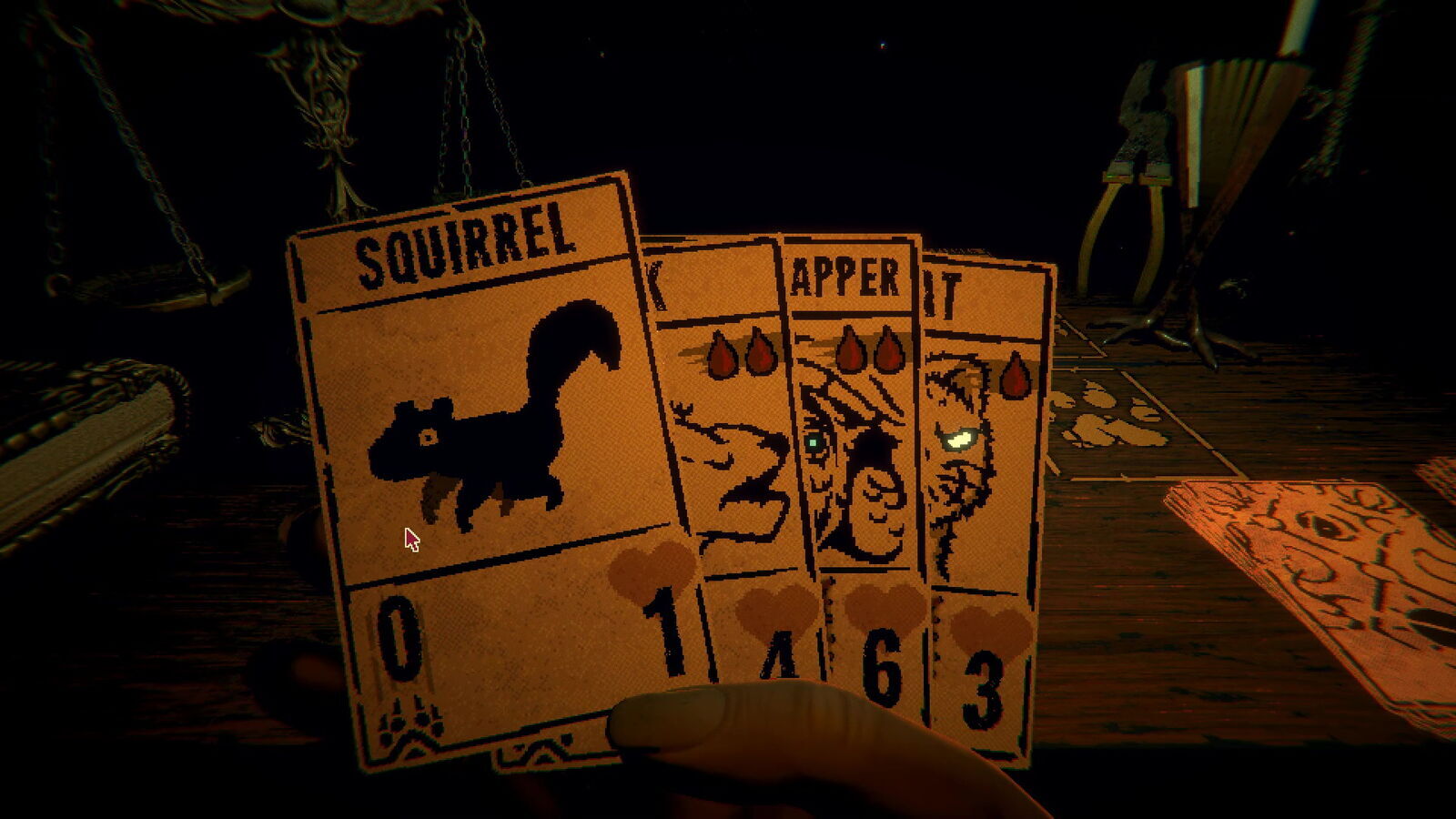
So for example when you want to put the “Stoat” card, it requires one blood, and you need to have one squirrel first on the table to kill before you can put the “Stoat”. You can play as many cards as you’d like in one turn as long as you can do any action. Once you are done, you ring the bell, then your cards attack, and once they are done, and your opponent can make his moves. Once the next turn starts, you get either a squirrel or a new card from your Deck, and you can decide to place your new card(s) by filling the empty slots, or replacing (killing) existing cards on their space. A Wolf card, for example, has strong attack power (3) but requires 2 drops of blood, so you’d need to kill 2 cards on your end to be able to place it.
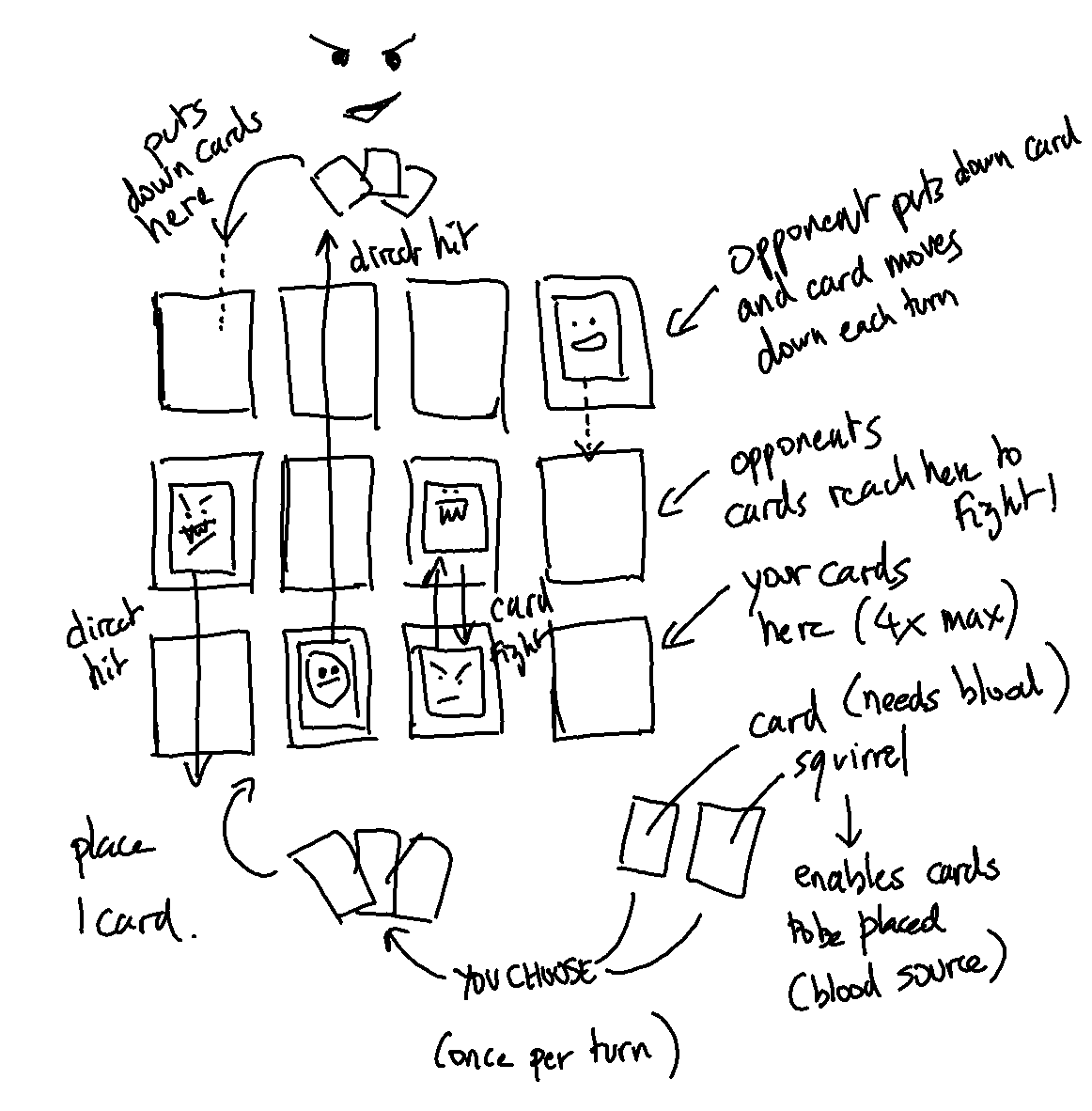
There’s also two candles on your side, representing two lives. If you happen to lose once, the card battle is over but you can still continue on the map. Losing a second time is an actual game over, resulting in your player’s death.
Even though the game concept is so simple, it’s actually very rich. There are numerous ways to play, and you really need to adapt to your opponent and the cards they use.
In order to make a successful run, you need two parts:
- Be strategic first, on the map. Make the most of the different paths you have to get the upgrades you need.
- Focus on tactics when playing to make the best of your cards against your current opponent. There’s always going to be a little luck involved (getting 4 bad cards in the beginning can be a very bad omen) but as long as you have a good plan there’s usually a way to turn almost every game into a win.
At the end of each level, you get to the boss fights, and there you will have to adjust how you play. Bosses have 2 lives and remove your extra candle light (i.e. extra life) if you had one - effectively making it into a life and death battle where no mistake is allowed. The first boss, the Prospector, is tough to beat when you meet him first, but really easy once you grasp the patterns.
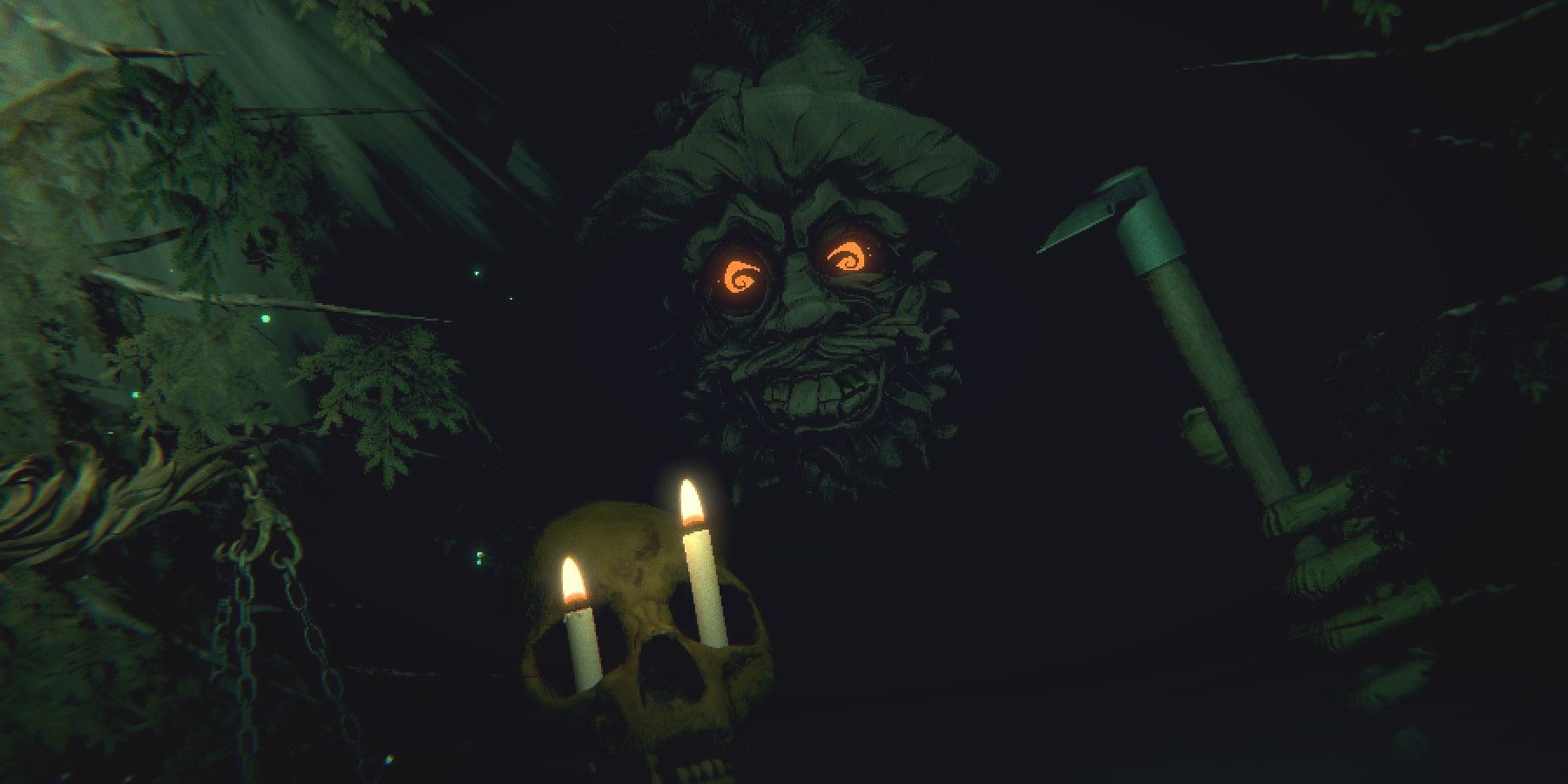
Bosses have some special powers that make the fights technically unfair, but you can use the knowledge you gain through previous battles to find the best way to approach them. You will make steady progress time after time. Of course, even after many hours of experience, there are times where I would lose stupidly on the first level again, but the skills make a clear difference. After a while, I almost never lost again the Prospector again, or even the seccond boss either.
There will be times where you almost have a perfect deck (by building it from one level to the next) and this is where you will secure your best chances to breeze through to the end of the game, by beating the 4 bosses.
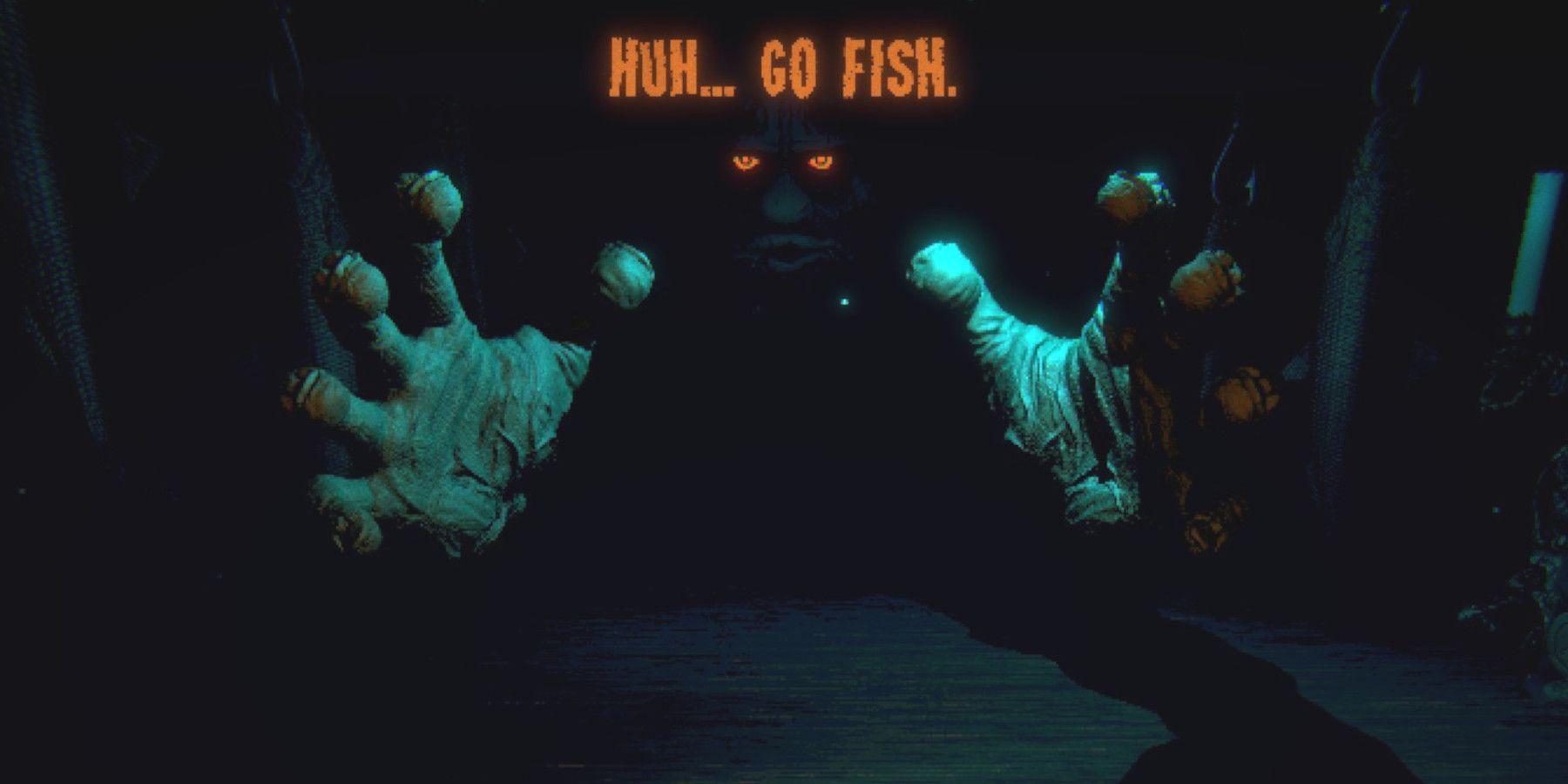
But… Inscryption is actually far from ending there. After you beat the 4 first bosses, you will get to Act II of the game, which is a big surprise as it turns in something quite different. I don’t want to spoil anything for you. My secret hope is that you will try it out.
When I asked people on Mastodon on “their best game released in 2022 so far”, there was one name coming back over and over again. Inscryption. And yes, I do think it is a masterpiece, too. You can see they spent a lot of time to get small details right, and injected an awful lot of great ideas. Like a new card coming in your deck named after… one of your Steam friends! And that’s just one among many wonderful finds.
It’s a delight to play, it makes you think and ponder about what to do next, and it’s not frustrating enough that it would make you quit half-way. It has this “just one more turn” property that belongs to games like Civilization and others. Addictive, to say the least.
The Linux side
Works perfectly on Linux with the native version, so no complaints there. On the Steam Deck, it’s a dream, as if it was made to be on this machine (using the trackpads to emulate the mouse movement): it’s the perfect game to pick up and play 10-20 minutes now and then. Until you realized you spent dozens on hours on it.
